Ordo Templi Orientis
|
Ellic Howe
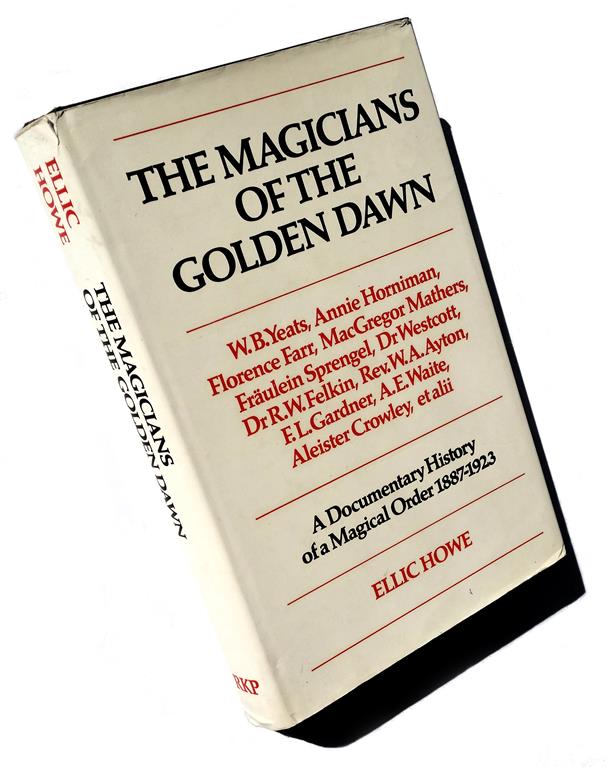
Karl R.H. Frick
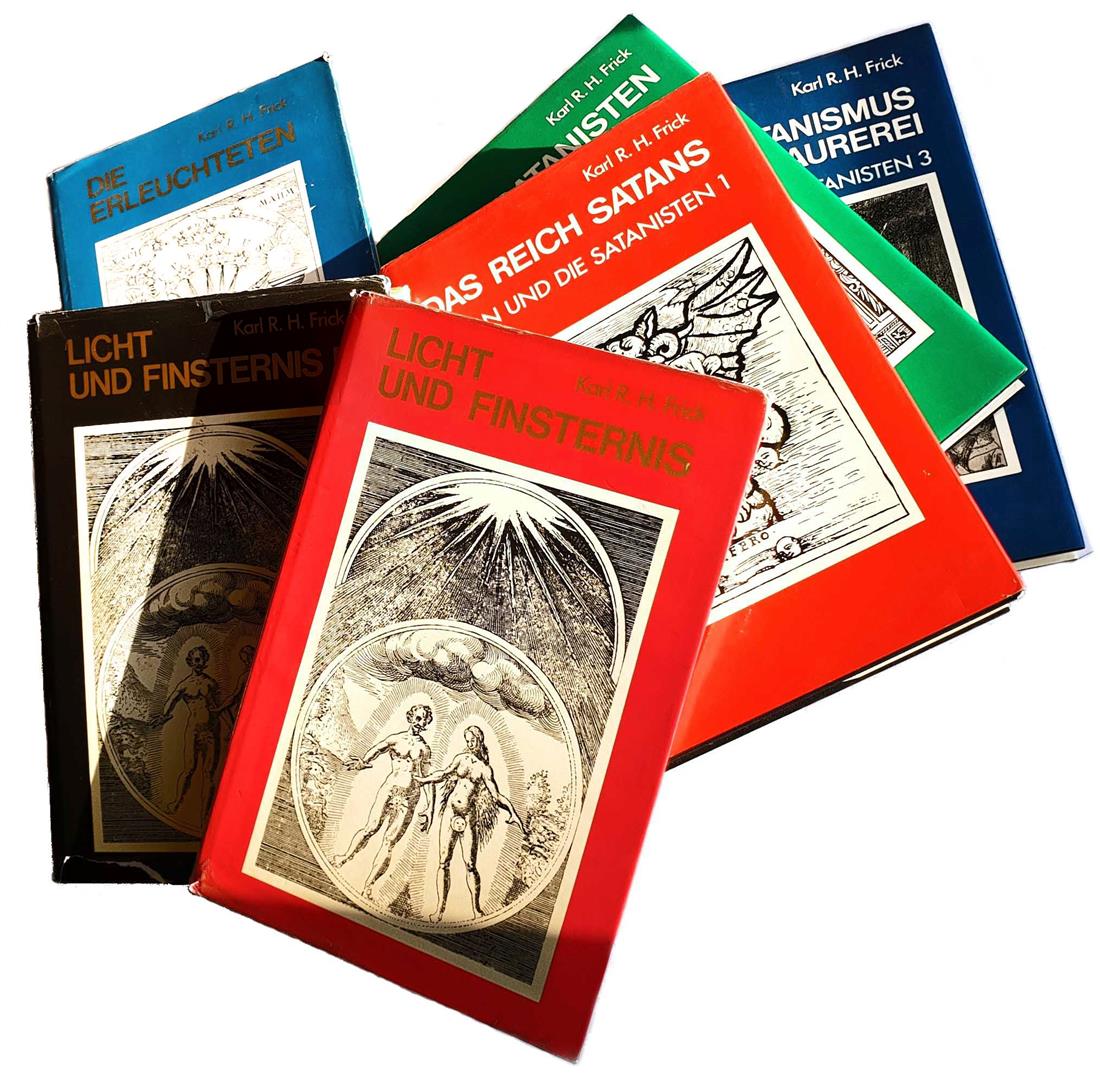
Helmut Möller — Ellic Howe
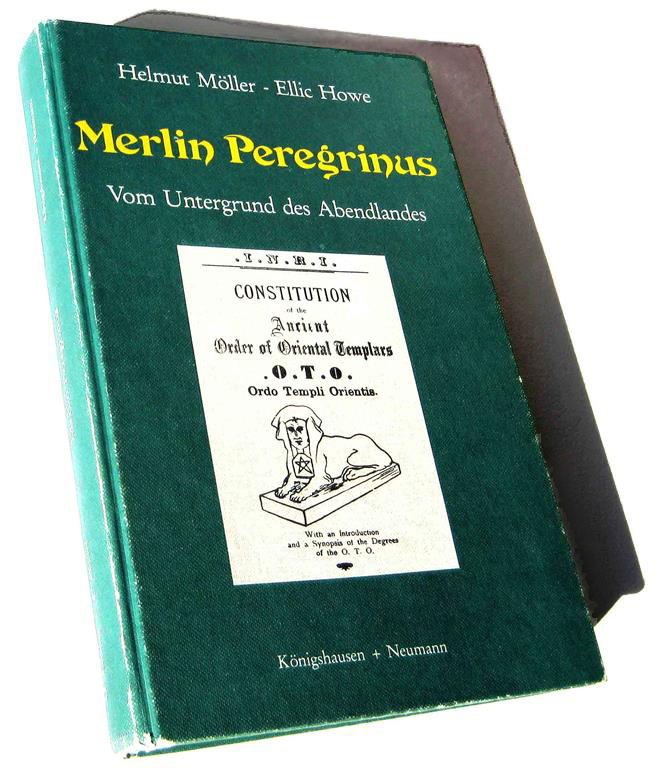
John Symonds

|
Actors: Many of the personalities involved in this account are often confusing, 'problematical' figures; hence references to them in the text, or citations in footnotes, will perforce themselves become contributions to the 'Phenomenon'.
Concept: This work's concept is the table of contents; for the most part, it is a considerable expansion and revision of a previously–published series of articles. [1] These articles concentrated in one sense on specific subjects; in another sense they were purely biographical accounts. These differing emphases are taken account of here, and are signalled by the sub–headings in each chapter. References from one chapter to another are included, to make the study more readable; it is intended mostly as a kind of reference work. [2]
Conventions: Abbreviations are introduced only once. I have attempted to refer to all doubtful terms in a distinct style, e.g 'Misraim', when no citation is present. Names of Orders, and Order–names or magical mottoes are placed within brackets at their first occurrence. Bibliographical sources are given at least one full listing.
After a brief overview, the various subjects and personalities are examined in greater detail. To avoid unnecessary complication, certain persons and organisations are not fully described on their first occurrence in the narrative, since they only play their full part in later chapters. Quotations from the protagonists have been edited for publication to include only the most relevant statements. These edits are indicated by dots within square brackets [...]; dots without these brackets were present in the original quotation. Otherwise, the style and content of original citations has been left uncorrected.
Treatment of sources: If this study seems to present a somewhat piecemeal study of a phenomenon, it is because of the contradictory and subjective characteristics so strongly marked throughout its sources. [3] Taking a literary–critical approach in chronological order at least allows scope for the themes to develop, and gives the documentary sources the chance to speak for themselves. This consistently 'problematical' quality of the theme must be borne in mind if any useful conclusions are to be drawn; of itself, the O.T.O. phenomenon never produced any definitive opinions except in a purely legalistic sense after litigation. [4] Hence this study must be seen as only some pieces of a puzzle, meant as contributions towards an overall picture. While drawing conclusions has to be mostly foregone in the absence of source–material, one can sketch in a partial overview from what little information there is. Although the source material is capable of various interpretations, this work aims to be as objective as it can. One exponent of the phenomenon [5] sees matters quite differently: "The history of a Magical Order starts from another viewpoint to the normal one." [6] This study is not an introduction to the current conceptions of Freemasonry and its peculiar terminology, to new religious groups and associated ideas (e.g. 'magic', 'apostolic succession', etc.), [7] or to particular personalities – Crowley and his teachings, for example. The titles mentioned under Context should serve the interested reader as introduction to such matters. The interpretations of events given in those works are however rarely used here, so that the published primary sources may speak for themselves. Quotations given without references to their source are such primary material. The following study is not meant as a discussion of the O.T.O.'s doctrinal content, or a description of initiation rituals; it is primarily a documentation of O.T.O. members' dealings with each other. Consequently, it is also meant as a history of the various bodies that call themselves "the O.T.O." as groups; and The O.T.O. Phenomenon was chosen as its title on the grounds of this complexity.
Legal rights: After careful investigation, the legal position appears to be as follows: Letters and correspondence have only limited copyright protection. [8] Under German and Swiss copyright law, works of scholarship are permitted to quote freely from documents in the public domain; this is linked to legal concepts of freedom of expression. Only in relation to quotations from material that has not yet been made public, do individual rights (privacy legislation) apply.[9, 10] The older the material in question (especially if its original author or owner is dead), the less it enjoys Protection of Piety and Personality Rights, and the sooner it can be published. (See the 'Mephisto' judgement obtained re Gustav Gründgens). [11] Every O.T.O. group tends to behave as if it were either working seriously in the public interest, or an unabashedly commercial publisher. Both kinds have proved essential in allowing widespread dissemination of information.
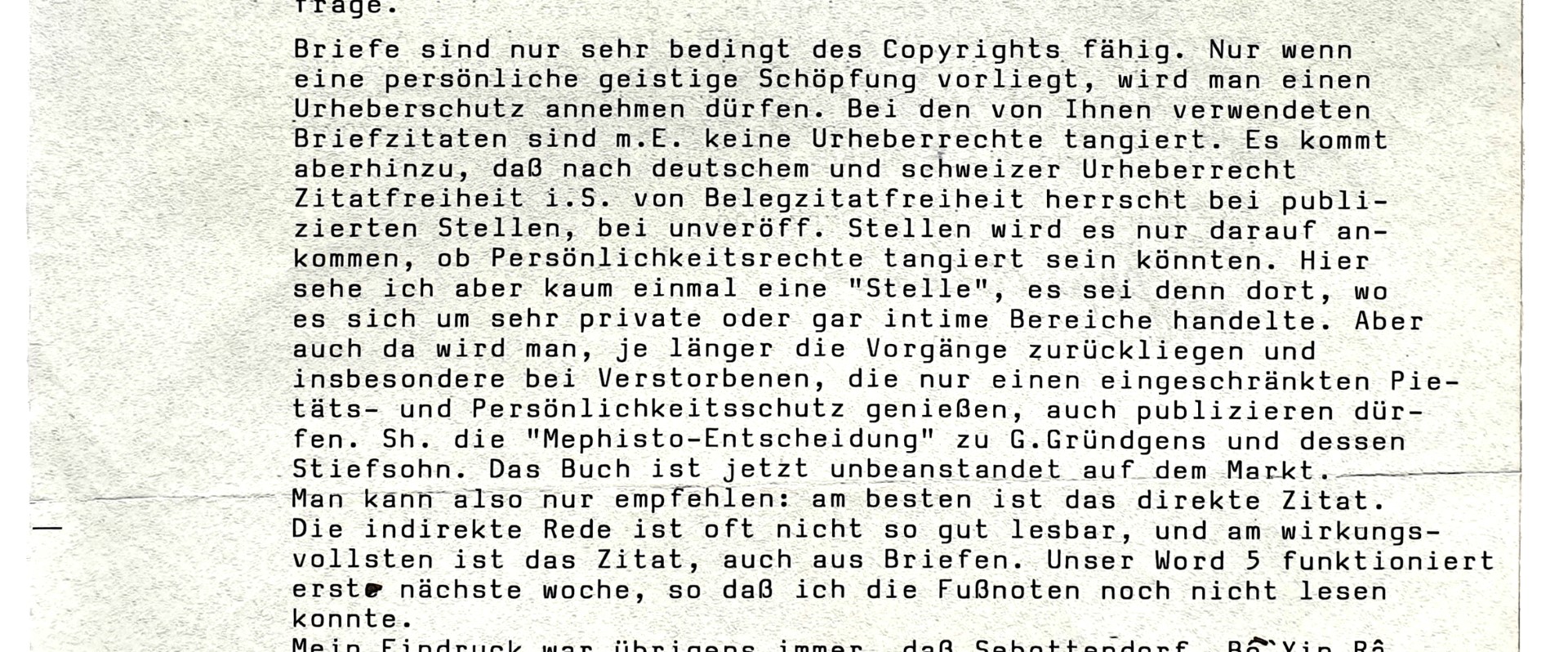
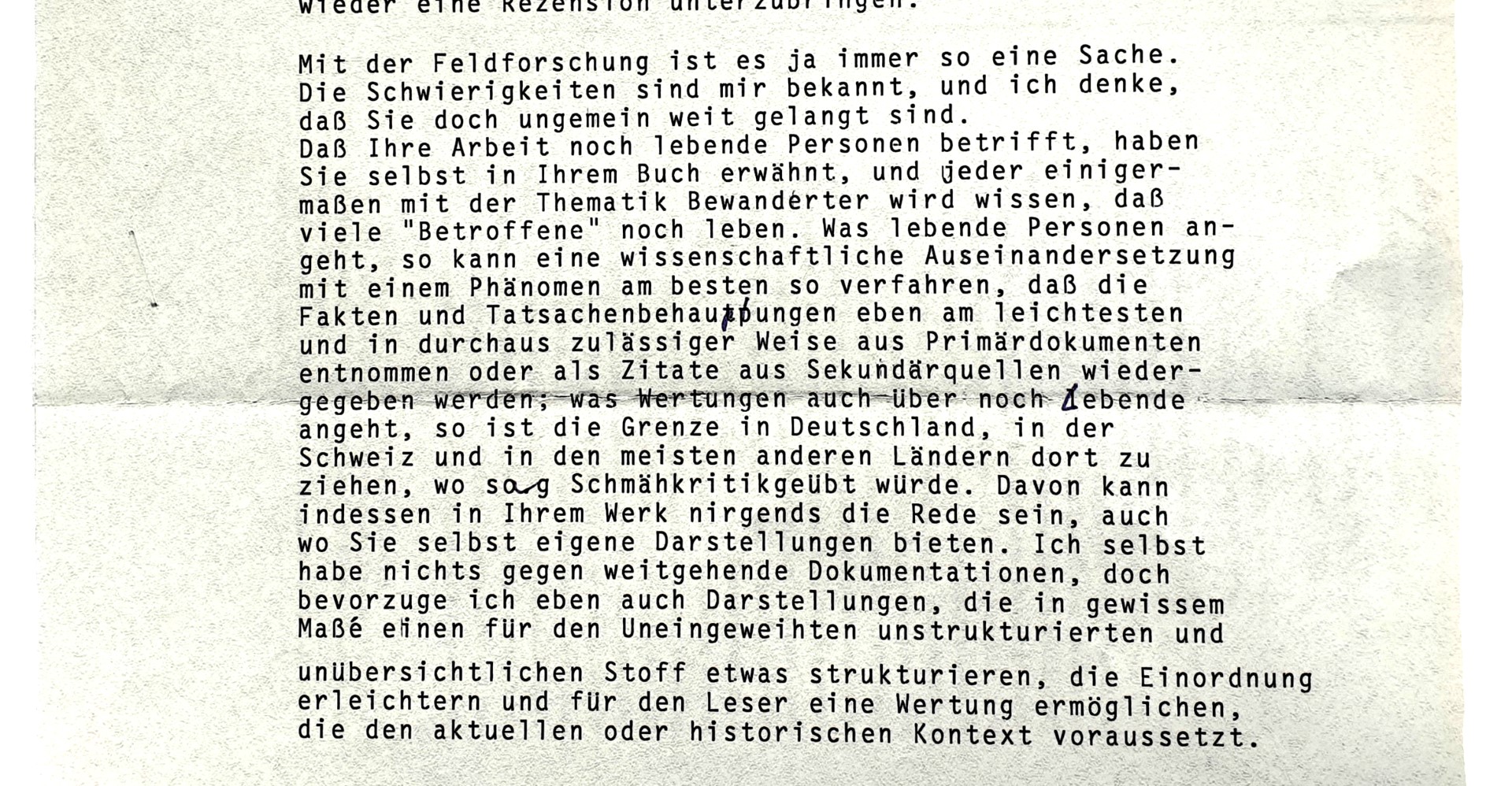
Rechtsanwalt Albrecht Goetz von Olenhusen
Expert report, dated March 17, 1991, and January 3, 1995, in relation to my publications.
Notes to Chapter 0 of "Das O.T.O. Phänomen", version 1994
- See my paper books for facsimiles of the associted documentation for this study
- AHA magazine (Bergen–Dumme, 1991–3), Nuit–Isis magazine (Oxford 1988 et seq.), Theosophical History (California State University 1992 et seq.) and various other occult magazines from Canada, Peru, Italy, and Germany.
- The social proscription on gossip in the O.T.O. groups appears to be less a social regulator, but much more a strong instrument for suppression (hand in hand with the hierarchical structure).
- Slander (Article 173 of the German Criminal Code), defamation of character (Article 174), insult (Article 177). Peter Nobel: Leitfaden zum Presserecht, Zofingen, 2nd ed., n.d., p. 116.
- Norbert Straet (high degree 'Caliphate' member), letter of 9.1.1987.
- On history in an order practising this magic, see: Tanya M. Luhrmann: Persuasions of the Witch's Craft, Harvard University Press, Cambridge, Massachusetts 1989, p. 13: "they are not very concerned about the objective 'truth' of their beliefs." p. 45: "They share, however, a common vision of [the history] of their past, differing only on whether this past is myth or legend. Many of them say that the truth of the vision is unimportant." 'Caliph' William Breeze says much the same in the journal Abrasax Nº 16 (Texas 1992), where he calls the history of his group a "mythos". Interviews etc., with members of the German branch of the 'Caliphate' in: Achim Otremba: Magie in Deutschland, Bergen 1992.
- E.g. F.W. Haack: Die Freibischöflichen Kirchen im deutschsprachigen Raum, Munich 1980, p. viii.
- It is legally correct to publish letters to the author in extenso.
- For example, an HIV infection is a constituent of the intimate sphere.
- Eberhard Spangenberg: Karriere eines Romans, Munich 1982, p. 168 and 207.
- Individuality ends at death according to Article 31 of the Civil Code.
There are many critical theories, but I don't adhere to any single one — because, in the end, they all have their uses. I don't approach texts, ideas, or people as if they were patients. Rationality, after all, is highly subjective. Or, as Paul Karl Feyerabend, the Austrian philosopher of science, put it: Anything goes.
The suitability of methods for thinking about occultism and esotericism is often judged by their results — though what counts as a result is another question entirely. As long as the insights remain discursive, innovative, and stimulating, even the most informal or unconventional approaches are not just permissible but necessary. Theories don’t drive evidence, nor should they. Analysis, then, is less about arriving at conclusions than about sustaining a dialogue between subject and researcher — one that can only ever yield provisional insights. Wayward ideas, however, can and should be viewed from wayward perspectives.
Reading Paul–Michel Foucault, Roland Barthes, Jacques Derrida, Félix Guattari, and Gilles Deleuze, or venturing into the works of Georges Bataille, Antonin Artaud, Terence Sellers, Jean Barraqué, Hermann Broch, Alain Robbe–Grillet, Maurice Blanchot, and Comte de Lautréamont (Isidore Ducasse) will not harm you. Have you tried Jacques–Marie Émile Lacan?
Translated and adapted from the Introduction of "Das O.T.O.-Phänomen" by Mark Parry-Maddocks
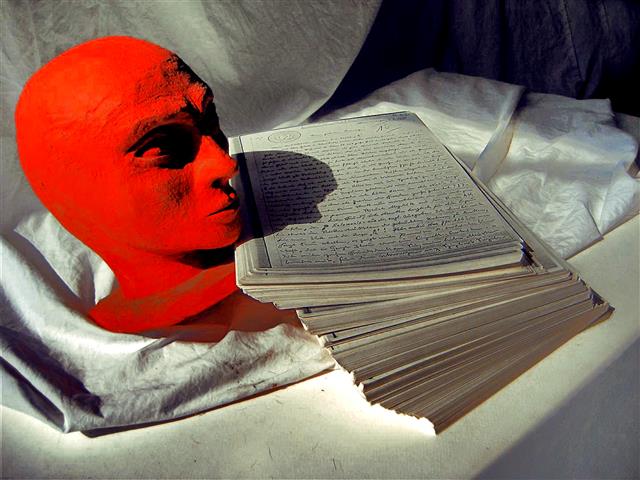
|
O.T.O. Phenomenon navigation page | main page | mail
What's New on the O.T.O. Phenomenon site?
More about all this in: Andreas Huettl and Peter-R. Koenig: Satan - Jünger, Jäger und Justiz
Scattered On The Floor
Browsing Through The Rituals


